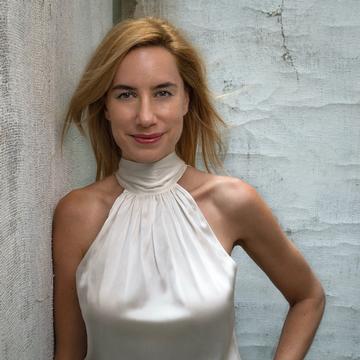TL;DR
- Pinar Seyhan Demirdag, co-founder of creative AI production company Seyhan Lee, is one of the leading figures at the forefront of using AI as filmmaking tool.
- Seyhan Lee has developed and released Cuebric, which uses generative AI to generate photoreal environments in an instant and far more affordably than current methods.
- Seyhan Demirdag is adamant that AI tools like hers do not spell the end of physical soundstages or deep human involvement in the craft.
The excitement surrounding AI tends to mask the practical benefits that tools using it can have on film and TV production today. A session at NAB Show, “Ask Me Anything: AI Post Production Workflow Experts Tell All,” intends to separate fantasy from reality.
Among the speakers is Pinar Seyhan Demirdag, co-founder of creative AI production company Seyhan Lee, and one of the leading figures at the forefront of using AI as filmmaking tool. Seyhan Demirdag will be joined by moderator, Michael Cioni, CEO and co-founder of Strada; Austin Case, Strada’s director of engineering; director Paul Trillo at Trillo Films; and Colourlab AI CEO Dado Valentic. The session will be held on at 10:30 AM on Sunday, April 14 in the Create Zone Theater (SU4087).
“I would like to show a practicable application of GenAI which results in the production of meaningful and emotional storytelling and that can reduce budgets,” Demirdag asserts.
Seyhan Demirdag will attempt to dispel the mystique and even fear that the industry has around the new technology. “I spend a great deal of time contemplating the power of humanity in the age of AI and for me, AI is a tool that benefits human workflows. That ethos is very much at the core of what we do.”

She continues, “AI did not invent itself. Humanity collectively decided that the time has come for us to adapt our workflows and the way we make meaning of life around us. The time has come for us to expand our capacity. Since AI works with parallel processing it processes information differently to linear computers. So, it has also come time for us to adapt our workflows, our creative thinking and creative execution with the same, multi-dimensional and multifaceted thought process.
“Inventions are parallel to the needs of their time. There’s nothing to fear about something whose time has come.”
Seyhan Lee has developed and released Cuebric, which uses generative AI to generate photoreal environments in an instant and far more affordably than current methods.
“AI is open source, so there are AI models on top of AI models that everybody is releasing but there are very few solutions that take the open-source research and make it cinematically appropriate or packaged to be usable by the end consumer. To my knowledge, there are even fewer tools that are geared toward professional use,” Seyhan Demirdag explains.
“There’s definitely a problem in the film industry which is the astronomical cost of environment building,” she continues. “When an actor changes direction in a Volume the virtual background needs to render and move correctly with them. The background cannot have a life of its own where the actor moves. But in order to do that current virtual production workflows essentially require the making of a game. That’s why the cost of creating background equates to the cost of building a game.”
And yet, Seyhan Demirdag says, if you analyze the background environments that are actually used in production up to 75 percent of them are not required or scenes can simply benefit from a simpler background.
“If productions were to adopt a solution like Cuebric they would not only have more options to use but they could also save the astronomical costs of virtual backgrounds.”
Seyhan Demirdag says production designers can use a tool like Cuebric to quickly upload sketches without needing to know how to use code or complicated tools.
“They can make a sketch, upload it, and visualize what they would like to build later on in a matter of minutes. The whole production can instantly understand the vision.”
Maybe the director can shoot a scene in Alaska that previously didn’t fit the budget. Or a writer on episodic TV needing to meet repeated tight deadlines could use the tool to quickly ideate and present what they have in mind.
She says several short films are using Cuebric , along with a promo for a well-known musician and several A-list studios.
Director Quinn H. and his team recently produced a pair of high production value shots — looking like Paramount’s Yellowstone or a scene from Dune for a fraction of the cost by using the background solution of the software.
“I would dare to say that Cuebric makes the world’s most collaborative art form even more collaborative,” she contends.
Seyhan Demirdag is adamant that AI tools like hers do not spell the end of physical soundstages or deep human involvement in the craft.
“Just as I love to read tangible, physical books I believe that the advent of AI will always give us options,” she says. “There will be a possibility for people not to use any actors if they want. It will be a choice. But I know that I will always be watching movies that speak to my heartstrings. That’s why there will always be a world where an actual camera will track an actual actor and the background will be tracked as a relationship.”

Why subscribe to The Angle?
Exclusive Insights: Get editorial roundups of the cutting-edge content that matters most.
Behind-the-Scenes Access: Peek behind the curtain with in-depth Q&As featuring industry experts and thought leaders.
Unparalleled Access: NAB Amplify is your digital hub for technology, trends, and insights unavailable anywhere else.
Join a community of professionals who are as passionate about the future of film, television, and digital storytelling as you are. Subscribe to The Angle today!

